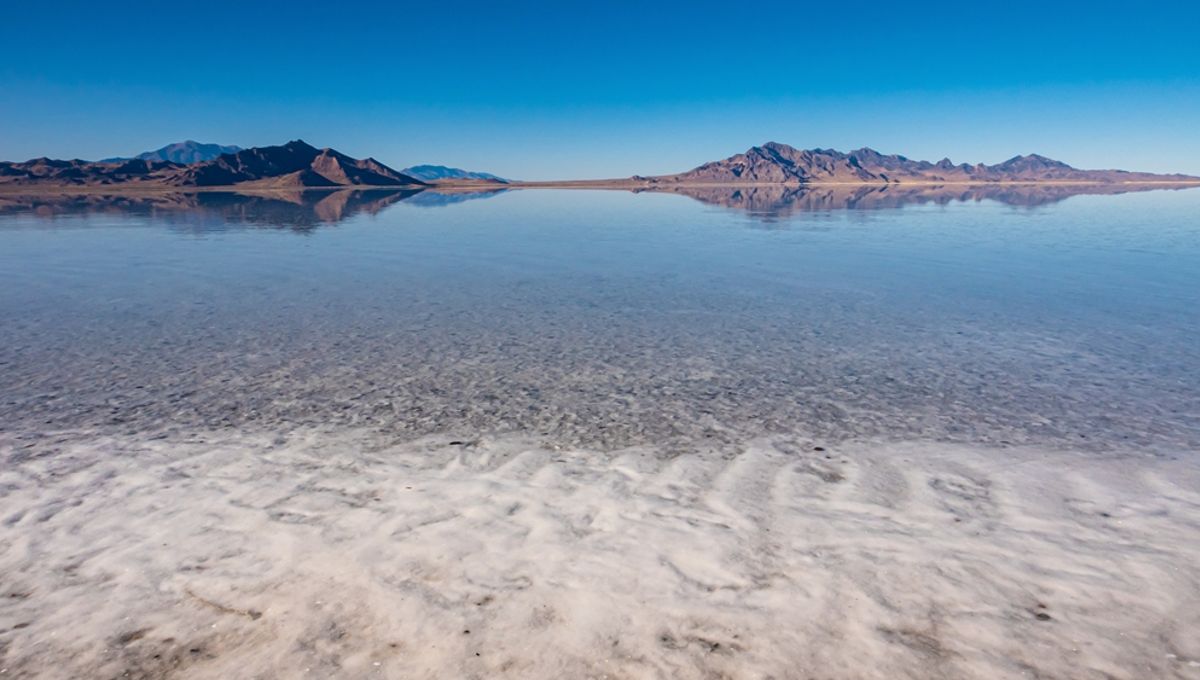
The largest saltwater lake in the Western Hemisphere could vanish within five years if emergency water conservation measures are not imposed immediately. According to a new report, Utah’s Great Salt Lake is currently 3 meters (10 feet) below its minimum healthy level, and its disappearance could expose millions of people to toxic dust containing particles of arsenic and mercury, among other dangerous metals.
“At 19 feet [5.8 meters] below its average natural level since 1850, the lake is in uncharted territory,” explain the researchers. This, they say, equates to a loss of 60 percent of the lake’s surface area and 73 percent of its total water content.
Leaving little doubt as to the cause of this alarming decline, the authors state that “excessive water use is destroying Great Salt Lake.” This process began with the construction of dams, canals, and pipelines in the early 1900s, yet was briefly halted in the 1980s when “an extremely uncommon wet period” allowed the lake to refill.
However, since peaking in 1987, the Great Salt Lake has been in continual decline. The drop in water levels has accelerated since 2020, with water diversions depriving the lake of more than two-thirds of its natural streamflow and resulting in an average deficit of 1.2 million acre-feet per year.
“If this loss rate continues, the lake as we know it is on track to disappear in five years,” say the report authors.
In 2022, the lake dropped to its lowest ever level, and the researchers now estimate that an additional million acre-feet per year are required to refill the lake. Depending on weather conditions, achieving this figure is likely to require a reduction in water consumption of “a third to a half.”
“We are in an all-hands-on-deck emergency, and we need farmers, counties, cities, businesses, churches, universities, and other organizations to do everything in their power to reduce outdoor water use,” write the researchers. Climate change, meanwhile, is probably responsible for roughly nine percent of the lake’s decline, and global efforts to reduce emissions are therefore needed to help stop the rot.
Aside from sustaining a thriving ecosystem that provides a habitat for around 10 million migratory birds, the Great Salt Lake also protects millions of people from hazardous pollutants. This is because toxic materials released by industrial and agricultural processes accumulate on the bottom of saline lakes, where they remain trapped.
Dangerous pollutants including arsenic, cadmium, mercury, nickel, chromium, lead, and cyanotoxins have all been detected in Great Salt Lake sediments, and could be released as dust particles if the water disappears. “Without a coordinated rescue, we can expect widespread air and water pollution, numerous Endangered Species Act listings, and declines in agriculture, industry, and overall quality of life,” say the researchers.
To prevent such catastrophic consequences, the authors call upon the governor’s office to “implement a watershed-wide emergency rescue” until the lake reaches a healthy level. “We need clear thresholds that trigger binding emergency conservation measures to stop the lake’s collapse,” they say.
“By taking a ‘lake first’ approach to water use, we can leave a legacy of wise stewardship for generations to come.”
[H/T: Live Science]
Source Link: Utah’s Great Salt Lake Could Disappear Within Five Years, Releasing Arsenic-Laced Dust